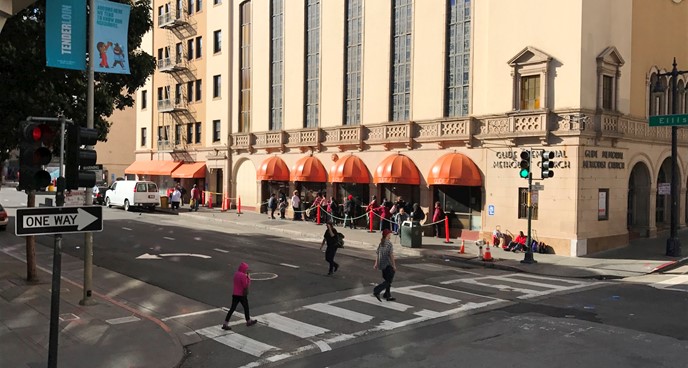As of 2019, it was estimated that San Francisco had a population of 8,035 homeless residents. Of this number, over half are unsheltered. This means that they’re out on the streets every single day, struggling with mental illness, addiction, or physical injury.
Yet, when you think of San Francisco, you’re unlikely to think about the homeless population. Perhaps you think about the Golden Gate Bridge, Alcatraz, or the countless tech companies located nearby instead.
Well, it turns out that those tech companies and the homeless may just have more in common than you think. While the homeless are among the neediest in society, those who work at tech companies are among the wealthiest. Lately, people have started to connect the stark contrast between the social classes of the homeless and those who work at tech companies. And now the question is whether it’s possible to level this out and leverage the privilege these companies have to solve some of the problems of homelessness that exist in San Francisco.
Here’s an in-depth examination of what that may look like.
Are tech companies doing enough good?
Tech companies can choose to set up their offices in low-income neighborhoods in order to receive tax breaks. The city of San Francisco does this as part of a “community benefit agreement.” They receive a tax break in exchange for helping to improve the troubled neighborhoods they reside in. Sounds like a good arrangement, right?
It is for tech companies. They save millions of dollars -- $126,888,132 to be exact. Yet, it’s still uncertain whether these companies are actually putting their money where their mouths are. Are the companies using the resources they would have otherwise spent on taxes on the community? Are they doing the good that we know they can?
Why is rethinking homelessness especially important now?
All too often the homeless are seen as despicable rather than displaced. They are seen as responsible for their circumstances…rather than a product of the chaotic system they live in. Addressing homelessness is challenging, and there is no one perfect solution.
That said, the homelessness population has skyrocketed since COVID-19 hit the United States in mid-March. In fact, the number of tents in the historic neighborhood tenderloin has increased to 285 percent. Tents and blankets crowd the sidewalks and make social distancing impossible. It simply isn’t a way for people to live with dignity, and something must be done – even if the city itself isn’t doing it.
When companies have the resources, why not innovatively use them? They could be the cure for a long-standing problem within society.
How do we push tech companies to do more?
It’s possible to eliminate homelessness in San Francisco through collaboration between the city and tech companies. After all, the infrastructure already exists. Micro-apartment communities are already being built for tech newbies. Micro-apartments, also called micro studio apartments, are even smaller than you’d think. They’re ultra-efficient and pack a kitchen, bathroom, and other necessities into only 200 to 400. But, never fear, their high ceilings and large windows often create the illusion of space (so you don’t feel as though you’re living in a box. They’ve become increasingly popular in the tech world where everything is efficient anyway.
And the question has become…why not use them for homeless individuals in need of transitional housing? If tech companies can build them for their employees, why not build them for those who need counseling, employment assistance, and rehabilitation. In the end, isn’t that what bettering the community means?
The very usage of this type of housing has been proven to be effective. Salt Lake City has almost eliminated the number of homeless individuals by providing this type of housing. The homeless are provided with permanent housing and on-site counseling. This model serves as an example of how it could work in a larger and more expensive like San Francisco – especially with the support of tech companies who, quite frankly, have the financial security.
Final thoughts
With COVID-19 upon us, this is not the time to step over the homeless on sidewalks. More than ever, this is the time to use all of our resources to help. We have the systems in place to help people get off the streets. If tech companies are already getting tax breaks for “helping the community,” then they should be helping the community right in front of them.







